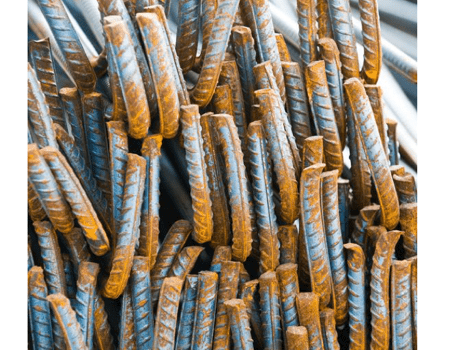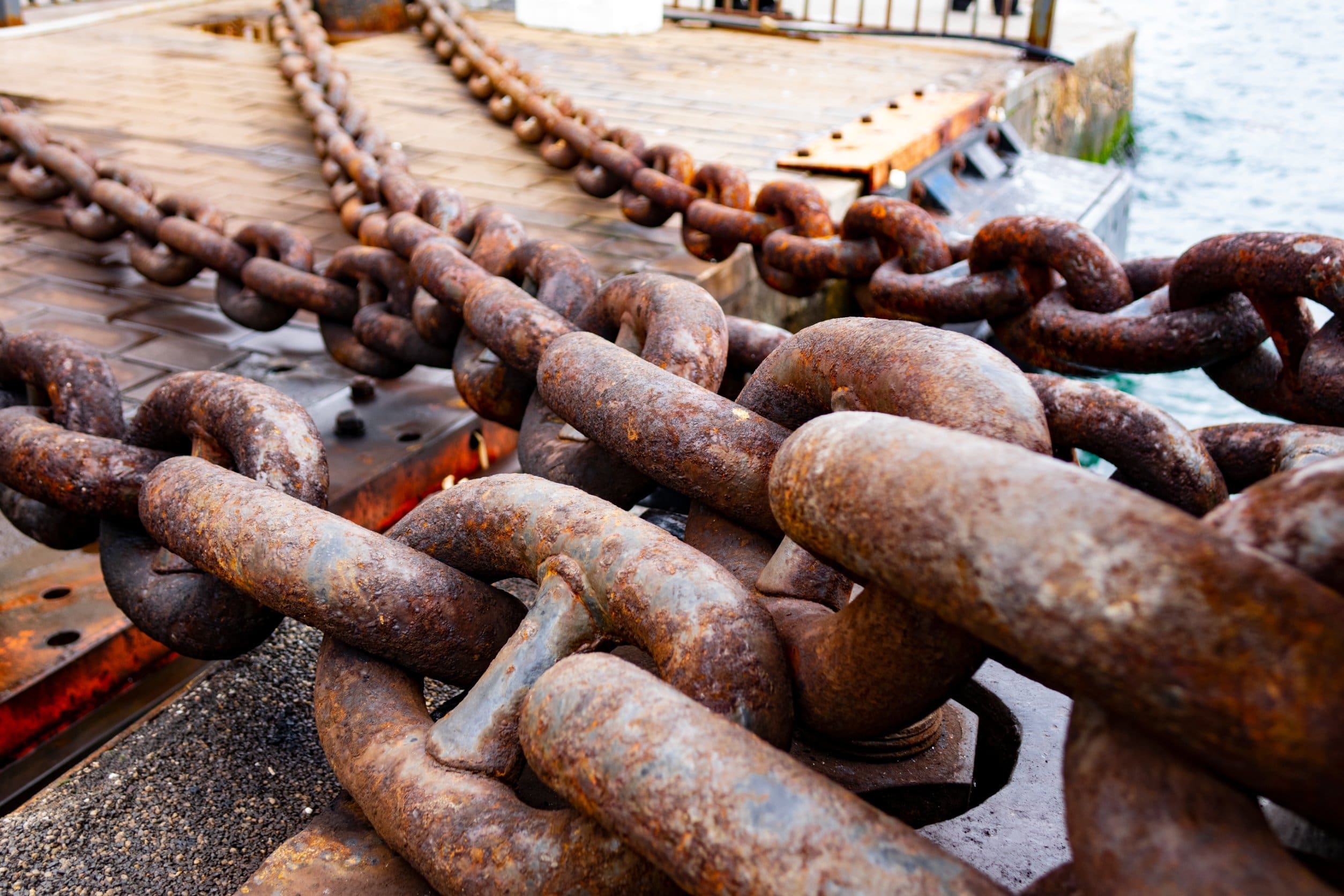In this post
Rusting occurs when iron is exposed to oxygen and water. Iron reacts with the oxygen and water to produce hydrated iron(III) oxide, or rust, as shown by the equation:
![Rendered by QuickLaTeX.com \[ \text {iron} + \text {oxygen} + \text {water} \rightarrow \text {hydrated iron oxide} \]](https://b3801007.smushcdn.com/3801007/wp-content/ql-cache/quicklatex.com-fbc5c482d5628271f53148e7ac268157_l3.png?lossy=2&strip=1&webp=1)
![Rendered by QuickLaTeX.com \[ 4Fe + 3O_2 + 2H_2O \rightarrow 2Fe_2O_3.H_2O \]](https://b3801007.smushcdn.com/3801007/wp-content/ql-cache/quicklatex.com-60192132dd99de8e6fa4252130806247_l3.png?lossy=2&strip=1&webp=1)

The rusting of iron is a redox reaction because both reduction and oxidation are occurring in the same reaction. Oxidation is used to describe a loss of electrons. It can also be used to describe a gain of oxygen. Reduction is used to describe the gain of electrons. It can also be used to describe a loss of oxygen.
An oxidising agent causes another species to be oxidised (lose electrons) and is itself reduced as it gains the electrons. A reducing agent causes another species to be reduced (gain electrons) and is itself oxidised as it loses the electrons.
- When the iron reacts with oxygen, each iron atom loses 3 electrons, forming an iron ion represented as Fe3+. The iron has been oxidised in this process and has therefore acted as the reducing agent. The iron has also been oxidised because it has gained oxygen to become iron(III) oxide
- When oxygen reacts with iron, each oxygen atom receives 2 electrons, forming an oxide ion representing as O2-. The oxygen has been reduced and has therefore acted as the oxidising agent
Prevention of rusting
There are several different methods which can be used to prevent the rusting of iron. All of them involve a way of preventing the oxygen and water coming into contact with the surface of the iron.
- Barrier methods – rusting of iron can be prevented by coating the iron with some form of barrier which prevents the water and oxygen from coming into contact with the surface of the iron. The iron could be painted, coated in oil or grease or covered in a plastic coating to protect its surface. However, if this coating or barrier is damaged and the surface of iron is exposed to oxygen and water, rusting can occur in that place on the metal. The iron surface could also be coated with a metal which is lower than it in the reactivity series. For example, a coat of tin is applied to iron in objects like food cans. Tin is less reactive than iron and the tin acts as a barrier preventing water and oxygen from coming into contact with the iron
- Sacrificial protection – sacrificial protection involves connecting or surrounding the iron with a metal which is more reactive than itself. The oxygen and water would react with the more reactive metal instead of the iron. Once the sacrificial metal has all reacted away, the iron surface is exposed to oxygen and water and would begin to rust unless it was recoated quickly. Blocks of more reactive metals like magnesium can be joined to the iron. These blocks are called sacrificial anodes. These metals will lose electrons instead of the iron losing them. Because magnesium is more reactive, when it corrodes, it prevents the iron from rusting
- Galvanising – galvanising involves the application of a coat of zinc to the iron object. Zinc is more reactive than iron so this is also a form of ‘sacrificial protection’. Here, zinc corrodes instead of iron as it is more reactive than iron. During this process, the zinc loses electrons and is oxidised rather than the iron
Key terms
Oxidation – the process of something being oxidised and gaining oxygen.
Oxidising agent – a substance that gains electrons from another element and is therefore reduced.
Redox reaction – reaction in which both reduction and oxidation occur.
Reduction – the process of something losing oxygen.
Reducing agent – a substance that loses electrons from another element and is therefore oxidised.



